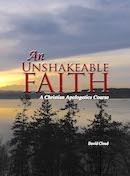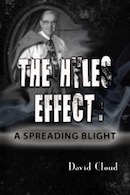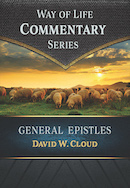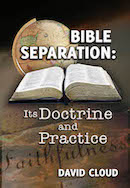866-295-4143, fbns@wayoflife.org
FRANCIS OF ASSISI (1181-1226) was the founder of the Order of Friars Minor, commonly known as the Franciscans. He was canonized in 1228 by Pope Gregory IX and is the patron saint of animals, merchants, and the environment. Some Catholic churches hold ceremonies honoring animals on “the saint’s feast day,” which is October 4.
Born to the family of a wealthy nobleman, he was named Giovanni di Bernardone by his mother but Francesco by his father. When in his twenties Francis allegedly saw Jesus looking at him through the eyes of a crucifix, telling him to repair a ruined church. Absconding with a load of expensive colored drapery from his father’s shop, he sold it for gold and tried to give it to the church. His father was not pleased, and Francis, after returning the gold, renounced his father and his patrimony. He dedicated himself to celibacy and married “the Lady Poverty.”
Francis founded his religious order on the command of Christ in Matthew 10:9-10, but this is not a command for believers in this present time: Jesus said: “Nor scrip for your journey, neither two coats, neither shoes, nor yet staves: for the workman is worthy of his meat. And into whatsoever city or town ye shall enter, enquire who in it is worthy; and there abide till ye go thence.” Francis ignored the fact that this command pertained only to the preaching of the kingdom in Israel. Jesus instructed them, “Go not into the way of the Gentiles ... But go rather to the lost sheep of the house of Israel” (Mat. 10:5-6). They were to preach, “The kingdom of heaven is at hand” (Mat. 10:7). This is not the preaching of the gospel; it is the proclamation that the Jews should repent because their King and Messiah was in their midst! Israel rejected the preaching of the kingdom and Christ turned His attention to making the Sacrifice on Calvary that would provide salvation for all that believe. After He died and rose from the dead, Christ gave a different commandment to the disciples, instructing them to go into all the world and preach the gospel to every creature, not just Israelites (Mk. 16:15; Acts 1:8).
Francis’ “friars” took vows of obedience, poverty, and chastity, and traveled two by two preaching and begging. This is contrary to the Bible’s witness, “I not seen the righteous forsaken, nor his seed begging bread” (Psa. 37:25).
Francis spent much time in solitude and contemplative practices, in which he was confirmed in his heretical doctrine. He supposedly saw a vision of a seraph angel crucified, which is blasphemous because an angel did not die for our sins. Francis received from this “angel” the “stigmata” or visible wounds of Jesus in his own body. “Suddenly he saw a vision of a seraph, a six-winged angel on a cross. This angel gave him the gift of the five wounds of Christ” (Gilbert Chesterton, St. Francis of Assisi, 1924, p. 131).
Francis was a great venerator of the Catholic Mary. His favorite place of abode was St. Mary of the Angels chapel in the Benedictine monastery Monte Subasio just outside of Assisi. He said:
“I therefore command all my Brothers, those living now and those to come in the future, to venerate the Holy Mother of God, whom we always implore to be our Protectress, to praise her at all times, in all circumstances of life, with all the means in their power and with the greatest devotion and submission” (Rule of the Friars Minor).
The Franciscans have a special Mass for the Feast of Our Lady of Angels which opens with the words: “O God, who hast wished to dispense all favors to men through thy most holy Mother…”
Francis was the first one to set up a living nativity scene. This was at Christmas time in Greccio, near Assisi, in about 1220. He used real animals “to create a living scene so that the worshipers could contemplate the birth of the child Jesus in a direct way, making use of the senses, especially sight” (“Francis of Assisi,” Wikipedia, quoting Bonaventure and Manning, The Life of St. Francis of Assisi, 1988 edition, p. 178). The straw-filled manger was used as the altar for the Christmas Mass. This reminds us of the heretical heritage of Christmas rituals. Instead of urging the people to accept the Bible by faith, Francis urged them to believe the witness of their eyes, and instead of preaching the death, burial, and resurrection of Christ, he preached his birth.
Many stories are told in Catholic literature of Francis’ strange relationship with animals. On one occasion he addressed a wolf as “brother” and supposedly talked him into living in harmony with the townspeople. On another occasion he preached to “my sisters the birds.” Afterwards, “He began to blame himself for negligence in not having preached to the birds before, and from that day on, he solicitously admonished all birds, all animals and reptiles” (Thomas of Celano’s biography of Francis, quoted by John Talbot, The Way of the Mystics, p. 65).
Francis also preached to the flowers.
On his death bed Francis supposedly thanked his donkey for carrying him around, and the donkey wept.
In his poem The Canticle of the Sun, he expressed love for the creation by calling it Brother Sun, Sister Moon, Mother Earth, Brother Fire, etc.
Francis received the blessing of Pope Innocent III, the founder of the brutal Inquisition. The Franciscans and the Dominicans were appointed to head up the Inquisition by one of Innocent’s successors, Pope Gregory IX (1227-1241). Gregory was a personal friend of Francis. The Franciscans and Dominicans were granted papal authority to punish Bible-believing Christians wherever they were found. They did a good job of it for half a millennium, developing a massive spy network (citizens from about age 14 and older throughout all Catholic territories were sworn in as spies of the Inquisition and were required to reveal all offenders), capturing and imprisoning and impoverishing and torturing and burning men and women whose only crime was refusing to bow to the pope’s false doctrine.
______________________________________________
The preceding is excerpted from the book CONTEMPLATIVE MYSTICISM: A POWERFUL ECUMENICAL BOND, which is available from Way of Life Literature. Contemplative mysticism, which originated with Roman Catholic and Greek Orthodox monasticism, is permeating every branch of Christianity today, including the Southern Baptist Convention. In this book we document the fact that Catholic mysticism leads inevitably to a broadminded ecumenical philosophy and to the adoption of heresies. For many, this path has led to interfaith dialogue, Buddhism, Hinduism, universalism, pantheism, panentheism, even goddess theology. One chapter is dedicated to exposing the heresies of Richard Foster: “Evangelicalism’s Mystical Sparkplug.” We describe the major contemplative practices, such as centering prayer, visualizing prayer, Jesus Prayer, Lectio Divina, and the labyrinth. We look at the history of Roman Catholic monasticism, beginning with the Desert Fathers and the Church Fathers, and document the heresies associated with it, such as its sacramental gospel, rejection of the Bible as sole authority, veneration of Mary, purgatory, celibacy, asceticism, allegorical interpretation of Scripture, and moral corruption. We examine the errors of contemplative mysticism, such as downplaying the centrality of the Bible, ignoring the fact that multitudes of professing Christians are not born again, exchanging the God of the Bible for a blind idol, ignoring the Bible’s warnings against associating with heresy and paganism, and downplaying the danger of spiritual delusion.
A major section of the book is entitled “A Biographical Catalog of Contemplative Mystics” which deals with dozens of the current-day contemplative promoters as well as the ancient “saints” and mystics that are being resurrected today, including the following:
Angela of Foligno, Anthony the Great, Augustine, Benedict of Nursia, Bernard of Clairvaux, Ken Blanchard, Bonaventure, Brother Lawrence, Catherine of Genoa, Catherine of Siena, Larry Crabb, Anthony De Mello, Dominic, Meister Eckhart, Tilden Edwards, James Finely, Richard Foster, Matthew Fox, Frances de Sales, Francis of Assisi, Alan Griffiths, Madame Guyon, Hildegard of Bingen, Ignatius of Loyola, Willigis Jager, John of the Cross, William Johnston, Julian of Norwich, Thomas Keating, Morton Kelsey, Thomas a Kempis, Sue Monk Kidd, Peter Kreeft, John Main, Brennan Manning, Thomas Merton, J.P. Moreland, Henri Nouwen, Basil Pennington, Eugene Peterson, Karl Kahner, Thomas Ryan, William Shannon, Henri Le Saux, Philip St. Roman, David Steindl-Rast, Henry Suso, John Michael Talbot, Johann Tauler, Wayne Teasdale, Pierre Teilhard, Teresa of Avila, Teresa of Lisieux, Majorie Thompson, Phyllis Tickle, Robert Webber, Dallas Willard, John Yungblut
The book contains an extensive index.
482 pages, $19.95
- Receive these reports by email
- www.wayoflife.org
______________________
Sharing Policy: Much of our material is available for free, such as the hundreds of articles at the Way of Life web site. Other items we sell to help fund our expensive literature and foreign church planting ministries. Way of Life's content falls into two categories: sharable and non-sharable. Things that we encourage you to share include the audio sermons, O Timothy magazine, FBIS articles, and the free eVideos and free eBooks. You are welcome to make copies of these at your own expense and share them with friends and family. You may also post parts of reports and/or entire reports to websites, blogs, etc as long as you give proper credit (citation). A link to the original report is very much appreciated as the reports are frequently updated and/or expanded. Things we do not want copied and distributed are "Store" items like the Fundamental Baptist Digital Library, print editions of our books, electronic editions of the books that we sell, the videos that we sell, etc. The items have taken years to produce at enormous expense in time and money, and we use the income from sales to help fund the ministry. We trust that your Christian honesty will preserve the integrity of this policy. "For the scripture saith, Thou shalt not muzzle the ox that treadeth out the corn. And, The labourer is worthy of his reward" (1 Timothy 5:18). Questions? support@wayoflife.org
Goal:Distributed by Way of Life Literature Inc., the Fundamental Baptist Information Service is an e-mail posting for Bible-believing Christians. Established in 1974, Way of Life Literature is a fundamental Baptist preaching and publishing ministry based in Bethel Baptist Church, London, Ontario, of which Wilbert Unger is the founding Pastor. Brother Cloud lives in South Asia where he has been a church planting missionary since 1979. Our primary goal with the FBIS is to provide material to assist preachers in the edification and protection of the churches.
Offering: Offerings are welcome if you care to make one. If you have been helped and/or blessed by our material offerings can be mailed or made online with with Visa, Mastercard, Discover, or Paypal. For information see: www.wayoflife.org/about/makeanoffering.html.





